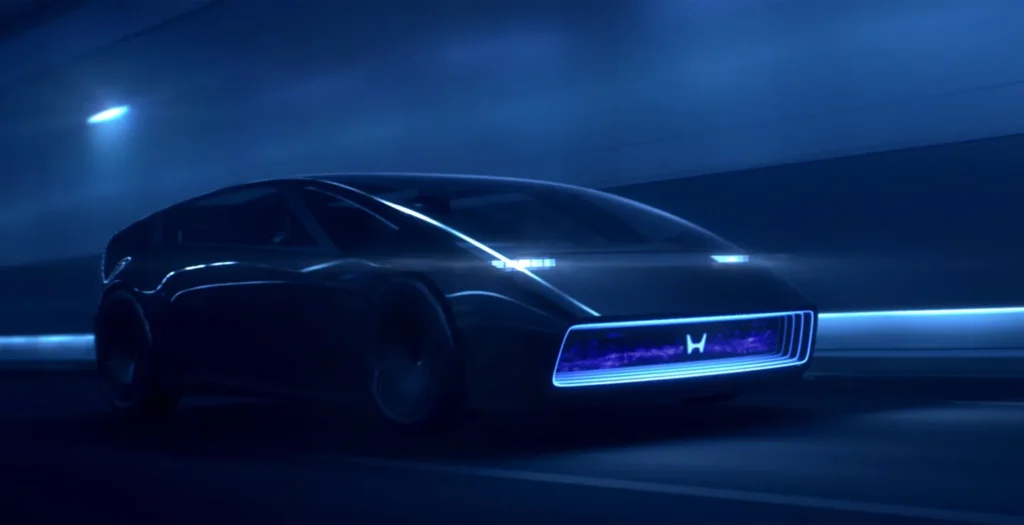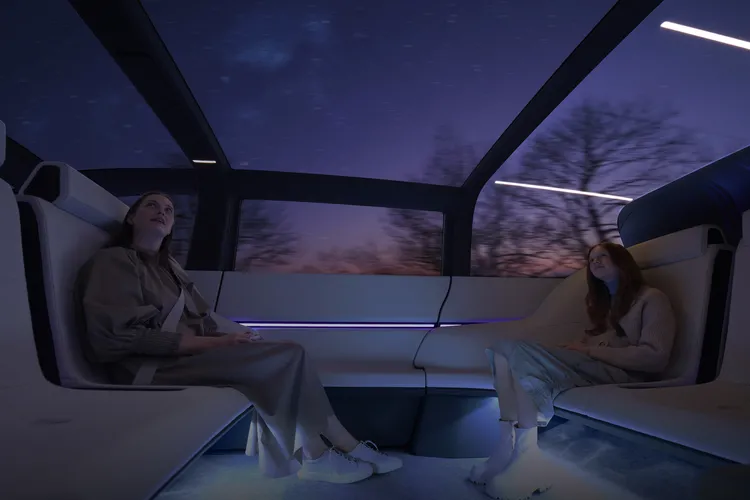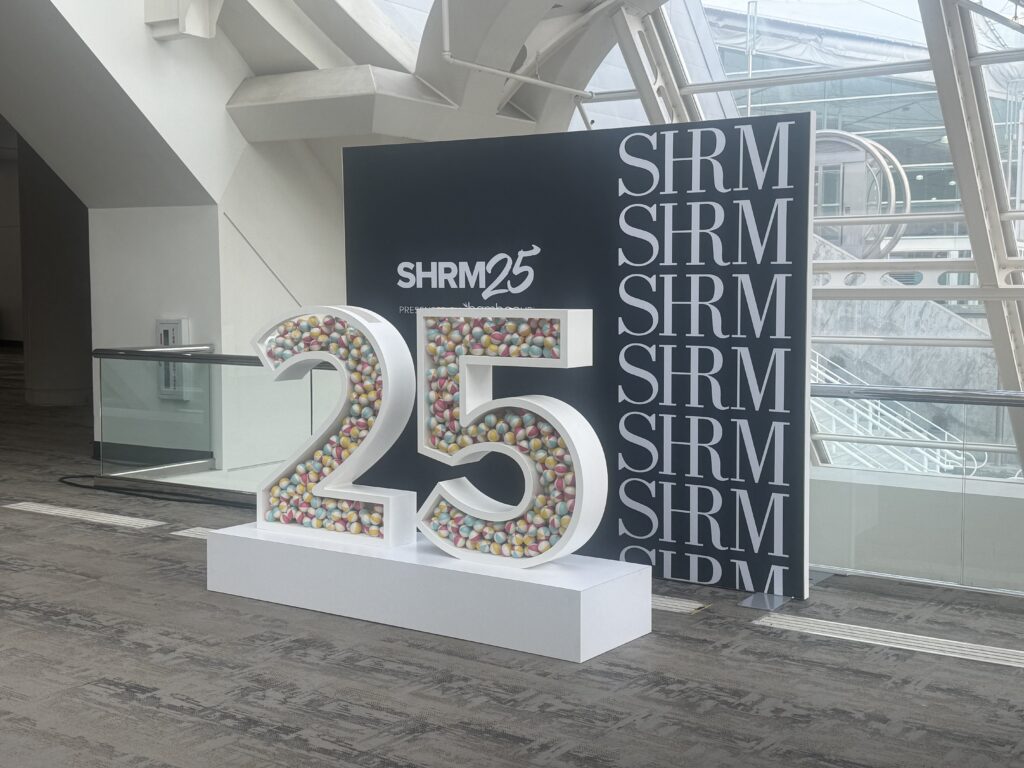The annual Consumer Electronics Show (CES) in Las Vegas marks one of the strongest indicators of where the automotive industry is heading. As cars get smarter and old-school automakers move away from internal-combustion engine (ICE) designs, CES 2025 is where consumers and business alike can get a peek into the future of driving.
During CES 2024, dozens of concept cars and prototypes were unveiled from both legacy brands and startups. This included futuristic cargo vans, all-electric sports cars, and even overhauled classics that embrace autonomous driving.
While CES 2025 was a little lighter on big-name marquees compared to past years, there were blockbuster announcements from Hyundai, BMW and more—not to mention the hundreds of non-automotive breakthroughs that grabbed headlines throughout.
An emphasis on customizability and ‘driver choice’ underlies much of the automotive innovations at CES 2025. This is a direct response to the deep desire most people have for vehicles that adapt to their lifestyle, personality, and even business driving needs.
We’ll unpack a pair of the most exciting drops out of CES 2025, along with our take on what these latest innovations will mean for consumers and businesses in the years to come.
One-two punch: Honda 0 EV prototypes
Honda first announced the 0 EV line at CES 2024 as a salve to the “thick, heavy” EVs currently on the market—likely a veiled dig at Tesla and the divisive Cybertruck.
The Saloon and Space-Hub concept cars were designed with three “defining principles”: Thin, Light and Wise. Taking cues from Honda’s legacy in F1—as well as the company’s game-changing innovations in robotics—these new designs look notably smoother than many of the most popular EVs on the road today.
Along with unveiling roadworthy prototypes of both the Saloon and Space-Hub, Honda shared more details about the 0 OS, the brand’s exclusive automated driving technology, and the system-on-a-chip that will underpin the passenger and driver experience.

The Saloon model can best be described as “sedan-like” in function but shares more design cues with an Indy race car than your neighbor’s Accord. While some critics have compared it’s looks to a dustbuster, the Saloon concept boasts a spacious interior with wagon proportions, mixing racer-looks with the utility of a daily driver.
The Space-Hub concept has more in common with traditional people-movers compared to the Saloon, taking inspiration from traditional minivans—even resembling the Rivian EVs that Amazon has started deploying for delivery. On the inside, the Space-Hub is akin to a greenhouse-on-wheels, with panoramic windows and transparent ceilings designed to connect passengers with the world outside.

Some of the functionality that Honda has already teased includes a slew of AI-powered features. The brand has also teased the ability for drivers to toggle between human and robot driving.
While most businesses today are a long way off from employing fully autonomous cars in their vehicle programs, hybrid driving systems like Honda’s “toggle” are anticipated to hit the roads next year. This will be a development that businesses with personal-use vehicle programs will need to keep tabs on, ensuring proper compliance and safety guardrails are in place for both driving employees and the company.
Depending on how prevalent these driving systems are in the future, businesses may need to start baking autonomous use protocols into their vehicle program mandates sooner than later.
Volkswagen enters the EV truck game with Scout
VW is taking a big swing on nostalgia with their backing of Scout Motors, a resuscitated American truck brand a truck that enjoyed cult popularity between 1961 and 1980. The original Scout trucks were compact but known for their rugged versatility: What they weren’t known for was being an EV company. However, with the market for electric trucks hotter than ever, Scout CEO Scott Keough hopes to build on the brand’s legacy of innovation.

“Scout was certainly ahead of its time in inventing the SUV segment and tapping into the American psyche of exploration,” Keogh said at a press conference unveiling the Traveler and Terra concepts back in October. “The original core idea—rugged, versatile vehicles capable of off-road adventure and family duty—is more relevant than ever […] We want to bring the best of the past ideals forward, not some warmed-over nostalgic haze.”
While the press got a preview of the Traveler SUV and Terra pickup late last year, road-ready prototypes dropped during CES 2025 along with more details around the unique technology and pricing that consumers can expect when the trucks come to market.
Customizability is the name-of-the-game for Scout, as both models will have full-EV or range-extended powertrain options. Buyers will also be able to customize features like auxiliary lighting, fold-back tops, off-road bumpers and more.
Of course, not all these features of the Scout will translate from personal use to business travel. They do, however, exemplify the exact sort of personalization that many drivers want from a vehicle used for both daily driving and off-hours recreation.
Peeking into future of personal and business driving
Many of the early prototypes unveiled at CES today will be tomorrow’s daily drivers. Most of the technologies are still new—and political roadblocks could halt momentum in EV adoption—but consumer demand is already there for more versatile cars that can serve personal, business and even recreational purposes.
Whether EVs or traditional ICEs, the vehicles drivers use for work and off-hours need to suit the interests of everyone responsible for what happens on the road. As companies continue adopting less prescriptive vehicle programs to accommodate the tastes of their employees, program administrators must stay on top of the risk and rewards of individual models.
The latest technology will also be key to supporting the next generation of vehicles used for work. Learn more about how to design a vehicle program that meets the needs of your business and employees in our guide and how cutting-edge tools can help streamline your program management from the top-down. .
CES 2025: Top 5 FAQ About Future Vehicle Technology
What are the major automotive announcements out of CES 2025?
Key presentations include:
- Honda 0 EV prototype unveilings
- Saloon model (sedan-like race car design)
- Space-Hub model (innovative people mover)
- Volkswagen’s Scout Motors reveals
- Terra pickup truck prototype
- Traveler SUV prototype
- Additional announcements from:
- Hyundai
- Suzuki
- BMW
- Other automotive innovators
What innovations did Honda bring to CES 2025?
Honda’s 0 EV line features:
- “Thin, Light and Wise” design principles
- New 0 OS proprietary automated driving technology
- Custom system-on-a-chip for enhanced user experience
- AI-powered features
- Toggle capability between human and robot driving
- Spacious interiors with innovative designs
- Streamlined aesthetics compared to current EVs
- F1 and robotics-inspired technology
What is Volkswagen’s Scout Motors revival bringing to market?
Scout’s new electric vehicles offer:
- Revival of the classic American truck brand
- Full-EV and range-extended powertrain options
- Customizable features including:
- Auxiliary lighting
- Fold-back tops
- Off-road bumpers
- Various personalization options
- Focus on versatility for both work and recreation
- Blend of nostalgic design and modern technology
How will these innovations impact business vehicle programs?
Key considerations for businesses include:
- Need for new autonomous driving protocols
- Updated safety guidelines for hybrid driving systems
- Consideration of EV integration into fleets
- Balance between personal and business vehicle use
- Risk management for new technology adoption
- Employee preference accommodation
- Program flexibility requirements
What trends are emerging in future vehicle development?
Major industry trends include:
- Shift toward versatile vehicles serving multiple purposes
- Integration of AI and autonomous driving capabilities
- Focus on customization and personalization options
- Evolution of traditional manufacturers into tech companies
- Emphasis on user experience and connectivity
- Balance between work and personal vehicle use
- Growing demand for sustainable transportation options
Note: While these technologies are still developing, businesses should stay informed about these trends to prepare for future vehicle program adaptations.







